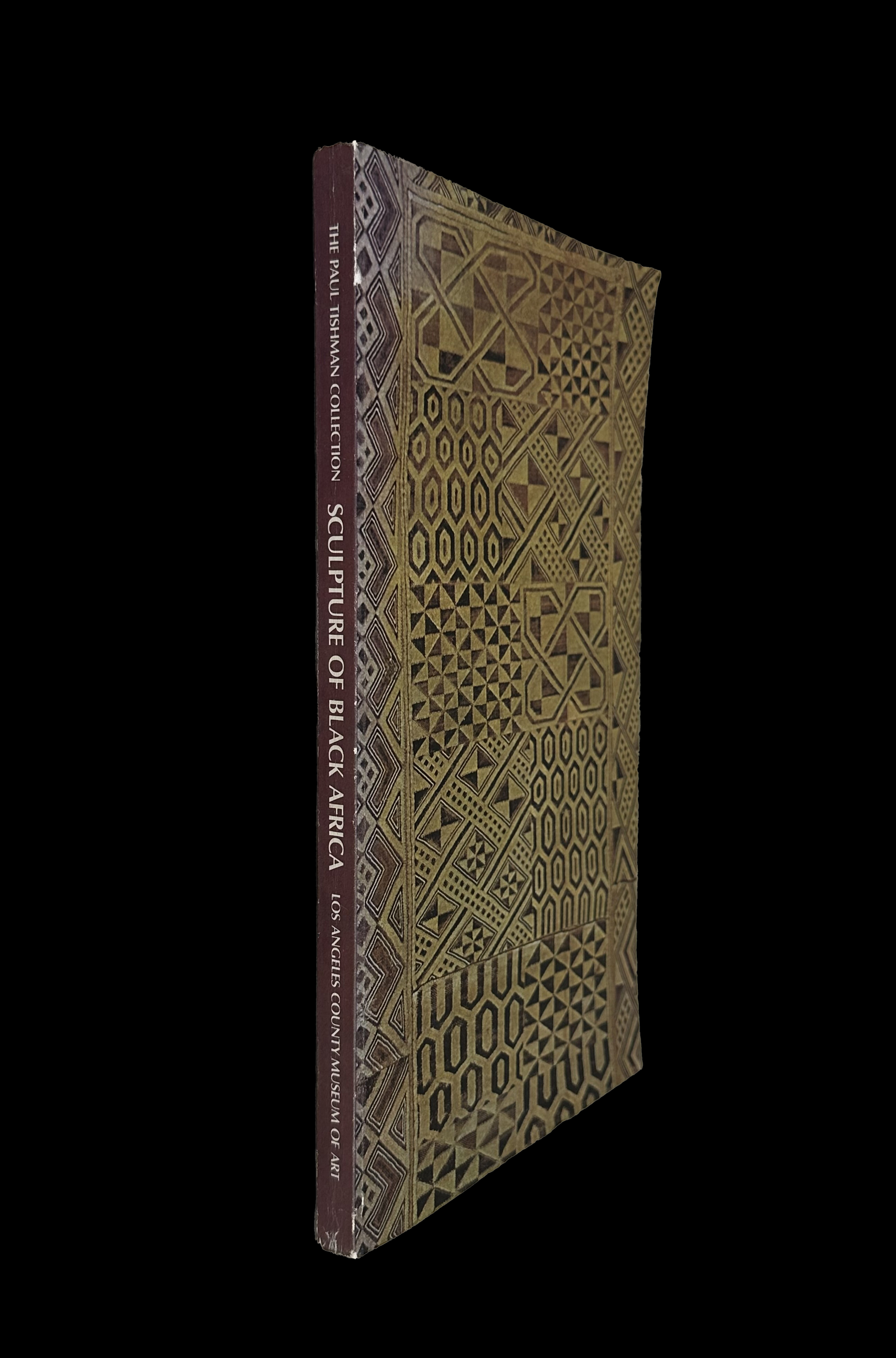By noted scholars Roy Sieber and Arnold Rubin in 1968.
Tishman was a significant early collector of this type of art, and this was the first major show of African art in Los Angeles.
150 page paperback. 169 artworks, many reproduced in b/w & color photos.
The sculptural traditions of that sub-continent have become accepted as an important part of the responsibility of the scholar and of the museum desiring to underscore the breadth and history of the artistic traditions of the world. Far from primitive, African sculpture represents a series of complex and often highly developed traditions whose meanings and histories are beginning to emerge. Just as in earlier centuries when Europe was only superficially aware of the arts of the ancient world or of the Orient, so in this century are we groping after a better understanding of the arts of black Africa.... Following the format established in the 1930s by the pioneer scholar, Kjersmeier, exhibition catalogs and survey texts have listed African sculptural styles solely in terms of their geographical distribution. Little or no attention has been paid to the interactions of styles, their historical relationships or origins, except for a few notable exceptions such as Nok, Ife and Benin. In the case of these exceptions there has developed a remarkably easy and uncritical assumption of continuity of historical flow and interactions, whereas, in fact, there are few connections that are firmly established. The bronzes of Benin are well known; William Fagg has suggested a convincing sequence of stylistic changes. His evidence is, of necessity, circumstantial, for the British Punitive Expedition of 1897 which brought out several thousand bronzes as the prize of war recorded no data. Thus we know -from later research and from earlier travelers - that the heads were dedicated to deceased Obas (kings), but we have no clue to the specific identity of particular heads. The magnificent heads from Ife are presumed to have been commemorative, and almost certainly were portraits of leaders (Oni). According to Benin oral history a brasscaster from Ife founded the tradition at Benin. Although the oral traditions seem convincing, the objects themselves are less so, for there is a significant style gap between the Ife heads and the earliest Benin examples. A better link must be established before the historical connection can be considered fully persuasive. Finally no clear linkage has yet been established between Nok and either Ife or Benin. We may have to look to other areas of West Africa for further evidence, or at least complications of this sequence. For example, it seems quite clear that the tradition of figurative terra-cotta sculpture was well established in what is now Ghana by 1700 or earlier. Some examples are of a quality to challenge those of Nigeria. Further, the Akan examples were most probably portraits of dead leaders. Thus the complex of commemorative portraiture associated with kingship may be far broader and more complex in its historical implications than we have hitherto thought. ... (Roy Sieber)
